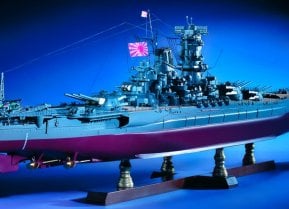Constellation-Class Frigates: Meet the Future of U.S. Naval Power
The Constellation-class, the U.S. Navy's latest guided-missile frigate, is under construction, aiming to enhance multi-mission capabilities with a design based on the European FREMM.
Summary: The Constellation-class, the U.S. Navy's latest guided-missile frigate, is under construction, aiming to enhance multi-mission capabilities with a design based on the European FREMM. Scheduled for a 2026 commission, the Navy plans to build 20 ships to bolster its fleet against growing maritime threats, notably from China. Winning the bid in 2020, Fincantieri Marinette Marine is constructing the ships to fulfill roles including anti-surface and anti-submarine warfare, convoy defense, and enhanced fleet tactical awareness. This initiative reflects the U.S. strategic response to China's naval expansion and aims to maintain U.S. naval dominance in the Indo-Pacific region.
The Dawn of a New Era: Inside the U.S. Navy's Constellation-Class Program
Currently under construction, the Constellation-class is the US Navy’s multi-mission guided-missile frigate, based upon the European multipurpose frigate, known as FREMM, sailing with the French and Italian navies. The Constellation is planned for commission in 2026; one is already under construction with six on order. In all, the Navy hopes to build 20 Constellations.
Bidding for the Constellation
In July 2017, the US Navy announced the FFG(X) frigate project in the United States Department of Defense’s Request for Information (RFI). The FFG(X) would serve as a program to field a new guided-missile frigate. Five shipbuilding companies submitted proposals for a new frigate design. The winner of the bid was announced in April 2020; Fincantieri Marinette Marine won the contract with a modified design of the European FREMM. Following Fincantieri Marinnette’s victory, the project was redesignated from FFG(X) to FFG-62, named for the lead ship of the class.
The Navy’s budget proposal, accommodating for the FFG-62 program, suggest that each ship in the class should cost between $850 to $950 million.
Designing the Constellation
As the Navy demanded the development of the Constellation in an accelerated fashion, designers did not have time to create a ship from scratch. Rather, the designers worked from an existing “parent” ship design. According to the RFI, “ competition for FFG(X) is envisioned to consider existing parent designs for a Small Surface Combatant that can be modified to accommodate the specific capability requirements prescribed by the U.S. Navy.” The specifics of what said ship will be able to do, according to the RFI, are vague. But the RFI is clear in that the ship will be based upon an existing design. The existing design? The European FREMM.
We do have a reasonable expectation of the specific functions the Constellations will be expected to perform, however, including destroying enemy surface vessels, detecting enemy submarines, defending convoy ships, employing active and passive electronic warfare systems, and defending against swarming small boat attacks.
Additionally, what the US Navy needed, when designed the Constellation, was a surface ship that could keep pace with US supercarriers. In addition, to keeping pace with the supercarriers, the US needed a surface ship that was equipped with the sensory equipment that would allow for the entire fleet to operate with enhanced and expanded tactical awareness.
“The FFG(X) will normally aggregate into strike groups and Large Surface Combatant led surface action groups but also possess the ability to robustly defend itself during conduct of independent operations while connected and contributing to the fleet tactical grid,” David Larter reported.
Essentially, the US Navy needs a surface vessel that can contribute in conflict against China.
Preparing for the Future
The US investment in sophisticated and futuristic surface vessels is no coincidence. China, the most direct threat to US hegemony, is currently engaged in one of world history’s most ambitious shipbuilding sprees. China has already expanded their navy sufficiently to claim the world’s largest naval force. And while the quality of US vessels still exceeds that of China’s, the sheer numbers of China’s fleet are concerning – especially when paired with China’s aggressive posturing throughout the Indo-Pacific region.

Any conflict with China, any need to defend US allies in the Indo-Pacific, will depend heavily upon the deployment of naval forces – like the forthcoming Constellation.
About the Author: Harrison Kass
Harrison Kass is a defense and national security writer with over 1,000 total pieces on issues involving global affairs. An attorney, pilot, guitarist, and minor pro hockey player, Harrison joined the US Air Force as a Pilot Trainee but was medically discharged. Harrison holds a BA from Lake Forest College, a JD from the University of Oregon, and an MA from New York University. Harrison listens to Dokken.


